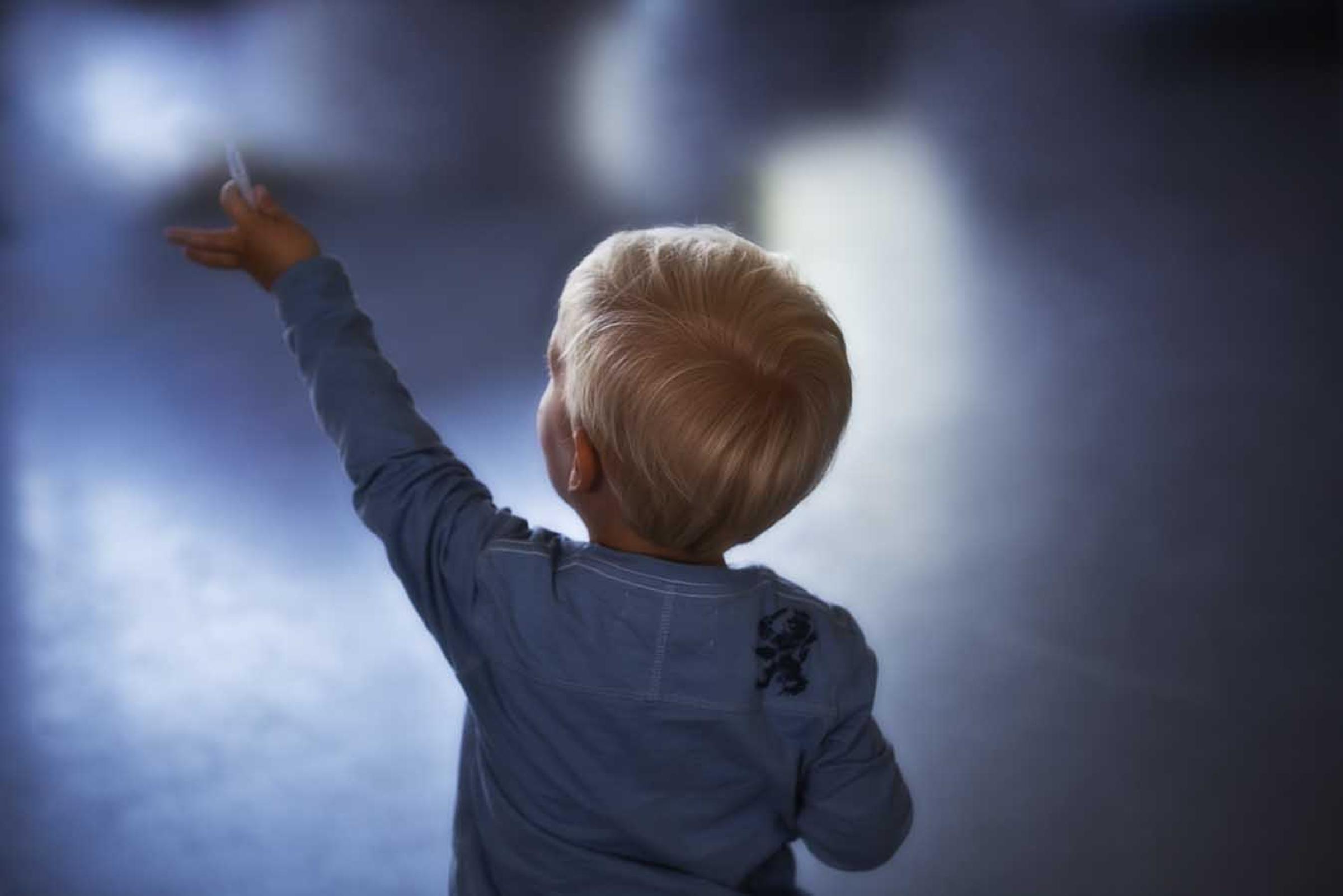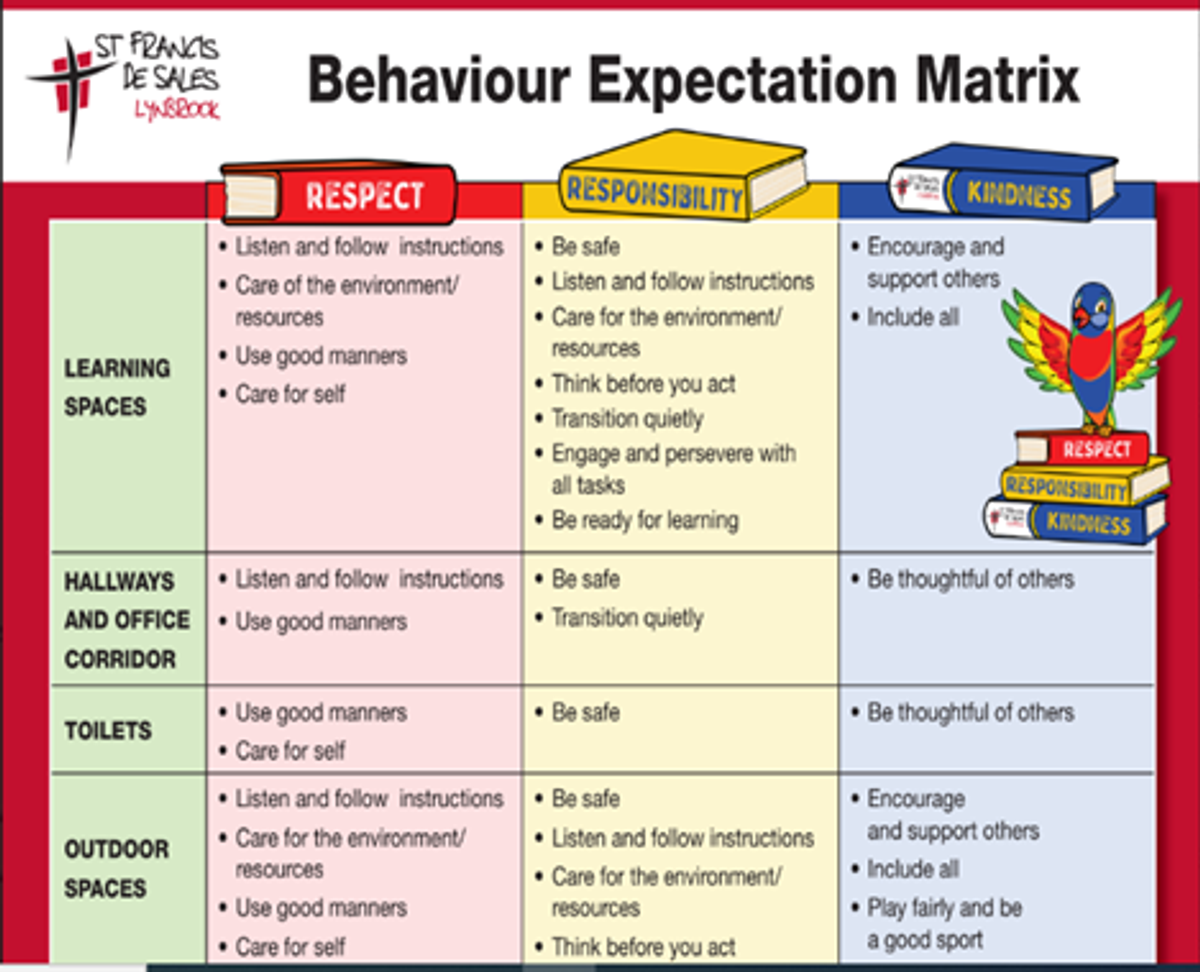Wellbeing

Positive Behaviours for Learning (PBL)
At SFS, our school expectations are:
Respect
Responsibility and
Kindness
This week we have continued to focus on the expectation of RESPECT in the learning space and listen and follow instructions in outdoor spaces. We have seen a drop in incidents of defiance over the last 2 weeks which is pleasing.
Defiance means that children are not completing class work and not following directions. As a more serious behaviour, defiance is non compliance and total refusal to comply with teacher instruction. We decided to continue to focus on listen and follow instructions to consolidate and practice the skills we have been focusing on. The senior teachers decided to focus on defiance at lunchtime as we have noticed that some children are ignoring the music that plays to signify that it is time to stop playing and return to the learning space.
Harmony Week/Day
We will be celebrating Harmony Week the week beginning Monday 20th March. The children will be focusing on the message of Harmony week in class during reading and writing, Inquiry and PBL (Positive behaviours for Learning) social skills lesson and circle time. The message is all about inclusion and celebrating and embracing our Multicultural identity.
On Harmony Day, March 21st, the children are encouraged to wear clothes representing their cultural background or wear the colour orange. Why orange? This was taken from the Australian Government Department for home affairs website.“
Orange is the colour chosen to represent Harmony Week. Traditionally, orange signifies social communication and meaningful conversations. It also relates to the freedom of ideas and encouragement of mutual respect. Australians can choose to wear something orange during Harmony Week to show their support for cultural diversity and an inclusive Australia”.
Stress management With Naplan testing and assessments being completed at school, children can feel quite stressed about the demands at school. The following fact sheet is taken from the Beyou website. BeYou is a resource for educators that promotes the mental health of all members of the school community. It explains what stress is, what happens to our body, what causes stress and has some helpful ideas of how to support young people and ourselves with managing stress.
For more information, visit www.beyou.edu.au
“Stress is a normal reaction to life’s changes and challenges. It can motivate us to get things done and to feel better about trying new thing.
What causes stress?
People experience stress for many reasons. One of the most common reasons is sudden or unexpected change, but even positive changes can be stressful. Expected changes – such as a child or young person starting at an early learning service or school, or changing between schools – can be also stressful. Stress can be a response to a single event or might be prolonged, cumulative stress.
Overwhelming stress impacts our physical and mental health, relationships, learning and development, and capacity to fulfil our roles (for example, parenting, working or studying). Changes can happen in many aspects of a person’s life at the same time, including shifts in their: • physical environment (such as moving house or starting a new job) • social environment (starting at a new school, feeling isolated after moving somewhere new, feeling they can’t control or influence their environment) economic circumstances (such as an unexpected financial loss, large expense or job loss).
It’s important to remember that stress is not anxiety – an anxiety condition is when someone:
• has anxious feelings which are consistently very intense
• have feelings that persist well after the stressful event has passed
• are so distressed that it interferes with their capacity to learn, socialise and do everyday things.
Everyday stress and coping skills
Children and young people develop coping skills through exposure to manageable amounts of stress. Overcoming small stresses helps them with all the challenges they’ll meet.
Some everyday stresses for children and young people include:
• morning routines and getting ready for their early learning service or school
• feeling uncertain about others’ expectations
• friendship or relationship difficulties
• bullying• worries about fitting in or being different
• managing school work, especially around exam time
• feeling over-scheduled with multiple tasks or commitments
• feeling time-pressured
• experiencing physiological changes in their bodies
• tension within families (such as changes in family relationships or make-up, family illness or financial problems)
• interaction with social media.
Many factors can make us susceptible to stress
Children and young people are more likely to experience stress in the following situations:
• multiple stressful situations (particularly those that they can’t easily control)
• transitions (life changes)
• stress accompanying a serious illness or injury
• isolation or loneliness
• abuse (past or current)
• family or parental stress
• family circumstances (such as relationship stress or breakdown, having a new baby in the family, negotiating developmental changes in adolescence or managing illness or a death).
Individual responses to stress
People experience and respond to stress in different ways. Our capacity to navigate stress will be different at various points in time. It’s important to understand what puts us at risk of stress and how we can protect ourselves from getting overwhelmed by it.
Risk factors include experiences or situations that increase the likelihood of developing mental health issues. For children and young people, these can be events that challenge their social and emotional wellbeing (such as family conflict or separation, experiencing a natural disaster or lacking supportive relationships). Protective factors buffer the effects of these risks and improve mental health.Risk and protective factors can change
Risk factors don’t automatically lead to mental health issues, especially if there are protective factors present.
This helps us understand why two people can respond quite differently to the same situation. Examples of protective factors for children and young people faced with stress include:
• a stable and warm home environment
• a belief in themselves that they can manage based on past experiences
• an optimistic outlook and hopefulness about the future
• social and emotional skills, such as being able to recognise and talk about emotions
• good communication skills
• previous experiences of asking for and receiving support when they need it
• strong relationships with family, peers and educators
• a supportive environment in their early learning service or school
• routines and consistency in their lives
• achieving developmental milestones
• play and participating in a range of interests (like reading, art, sport and music)
• being in good physical health
• having access to supports if required, such as a mentor or counsellor.
Signs of stress in children and young people
Stress is the body’s reaction to change or overload It can show up in children and young people’s behaviour, emotions, body and thinking.
This can look like:
• sleep changes or tiredness
• changes in appetite or interest in food
• returning to earlier behaviours (such as bedwetting or needing frequent comfort)
• not enjoying or participating in usual interests or experiences
• withdrawing from friends and family
• changes in engagement in learning or academic results
• irritability and frustration
• fearfulness or constant worrying
• tearfulness and crying
• poor concentration
• overreacting to small things
• being physically run down or feeling unwell (for example, stomach pain or headaches)
• mood swings• low levels of motivation. Many of these signs of stress are similar to an adult’s experiences.
Being mindful of the different ways that stress manifests in people is an important first step in offering support.
Stress and brain development
Stress is a normal response. In many instances stress has a positive effect. It pushes children and young people to adapt to their environment and use new skills. In turn, this supports their learning and development. Experiences of repeated high levels of stress means there’s a constant focus on managing a threat that may be present. This takes attention away from opportunities to interact with the environment in a way that supports brain development.
Toxic stress
The high stress levels resulting from abuse, neglect or trauma is what’s called ‘toxic stress’ (that is, it can become toxic to brain development). Children and young people’s brains develop in ways that help them cope with these stressful situations. They tend to respond with higher levels of fear and hypervigilance, regardless of the level of threat present. This means their brains have been primed to look out for constant danger and so they perceive greater levels of threat. This constant state of being ‘on alert’ also shapes children and young people’s developing stress response system, activating it even when no threat exists. This stress response releases hormones into the bloodstream. Ordinarily, these hormones help us respond to a stressful situation. But when released often and in high doses, these hormones can have a damaging effect on the body and the brain.
Cortisol
Cortisol is the body's stress hormone. Specific areas of the brain have receptors for cortisol – the memory and learning areas of the brain (the hippocampus) are especially receptive. Cortisol attaches to this area during stressful events. They activate memories for dealing with previously stressful times and apply these to the current situation. Research shows that children and young people who have experienced abuse and neglect have smaller hippocampal volumes, related to memory and learning difficulties. All children and young people benefit from warm and trusting relationships with caring educators, but this is especially true for individuals who’ve experienced stressful events. Repeated opportunities for these types of interactions can help buffer some of their stressful experiences, supporting their learning and development.
Self-care
Self-care is a good way to manage stress. You need to practice self-care in a way that works for you. Having said that, there are some common practices that most people find useful, including maintaining a healthy lifestyle by eating well, getting enough sleep and exercise, and cutting back on alcohol and drugs.
Some other strategies which you might find helpful in managing stress include:
• Monitor your stress- recognise your own signs of stress and identify situations you find difficult, so you can be pro-active about managing stress during these times.
• Learn how to manage your stress in positive ways- such as through exercise, relaxation, breathing, yoga, positive self-talk.
• Be aware of your thinking habits- challenge negative or unhelpful thoughts.
• Schedule ‘time out’ for yourself- pursue your hobbies or interests.
• Connect- foster and maintain your personal relationships. A sense of belonging and connection is important for your wellbeing.
•Relax- learn and use breathing techniques, progressive relaxation, visualisations or meditation to consciously relax your mind and body. Practice mindfulness by focusing your awareness on the present moment.
• Be mindful and self-aware- focus on how you are feeling and how you act, and the impact that can have on your colleagues and your students. Be supportive of others without passing judgement.
• Consider making specific times or days of the week for activities which support your wellbeing, so they become routine and are less likely to drop off at times of increased work demands or other competing priorities.
Ask for support If difficulties persist beyond a few weeks, seek additional support. Reach out for support when you need it — from colleagues, friends, family, your GP, a psychologist, or an employee assistance program through your workplace. Being comfortable to ask for and give support helps reduce the fear of stigma for help-seeking and is important in building a supportive culture at your school.”
If you have any concerns about the wellbeing of your child, please do not hesitate to contact me.
rlenko@sfslynbrook.catholic.edu.au
Rachel Lenko
Student Wellbeing Leader







